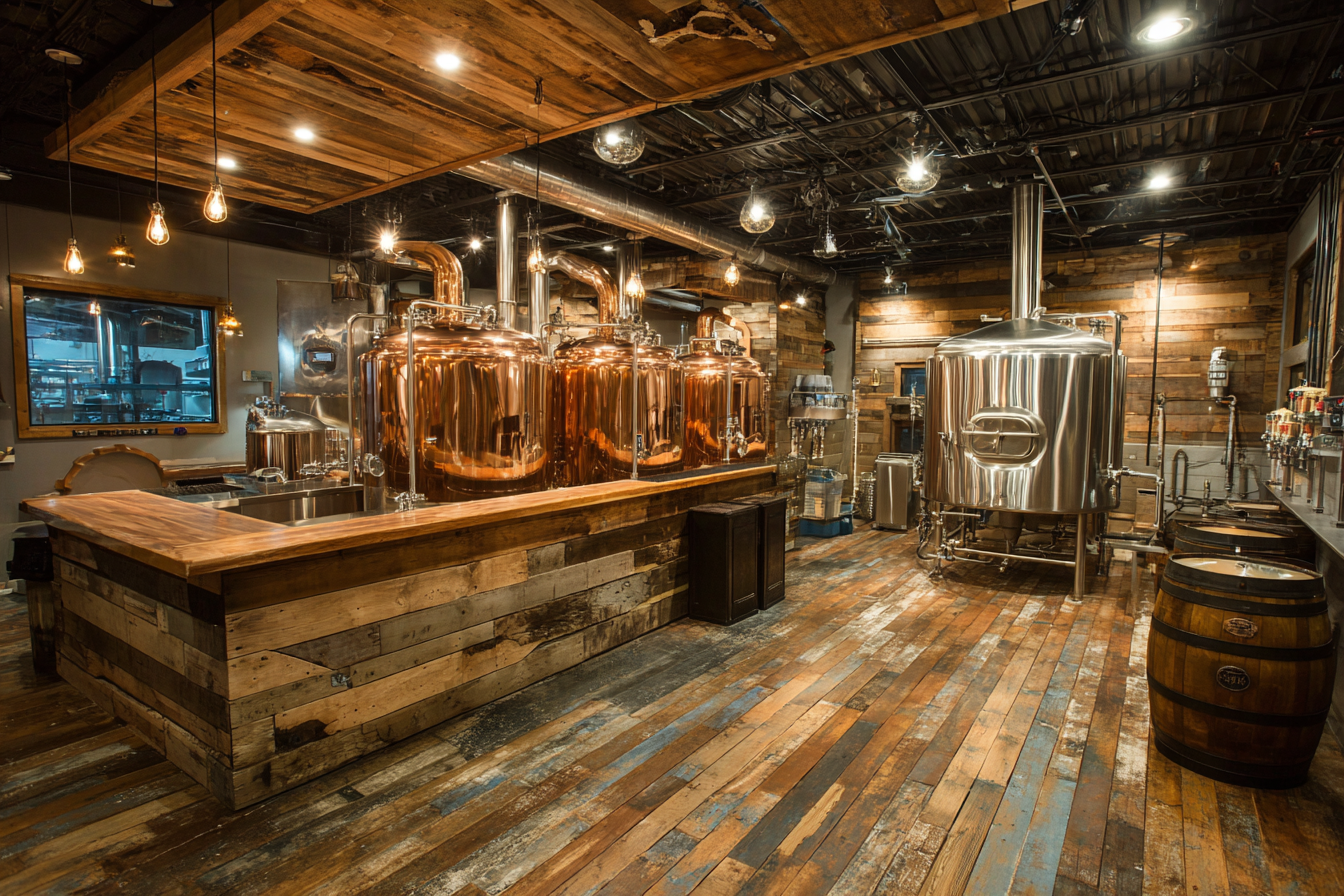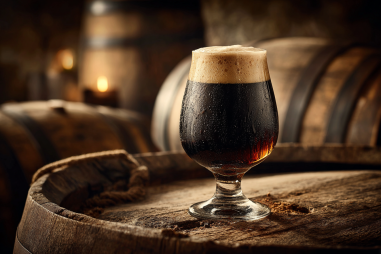If you’ve ever marveled at the deep, complex flavors of an imperial stout, you might wonder what goes into crafting this bold, hearty beer. The imperial stout brewing process is a rewarding journey that combines high-quality ingredients, precise brewing techniques, and patience. Whether you’re a homebrewer aiming to tackle your next big project or a professional brewer honing your recipe, understanding each step of this process is key to creating a stout that’s rich, balanced, and full of character. Let’s dive into the intricate world of imperial stout brewing, from ingredient selection to final conditioning.
Introduction to Imperial Stout Brewing
Imperial stouts are known for their robust flavor profile, high alcohol content, and deep, dark color. Originating from the stouts brewed for the Russian Imperial Court in the 18th century, these beers pack a punch with an alcohol volume often ranging from 8% to 12% or higher. The brewing process must be tailored to handle this level of strength while retaining smoothness and complexity.
Unlike lighter beers, imperial stouts require special attention to malt selection, mash temperatures, fermentation control, and aging. The goal is to achieve rich notes of chocolate, coffee, caramel, dark fruit, and sometimes a subtle roastiness or smokiness. To get there, brewers need to follow a detailed and methodical brewing approach.
Key Ingredients: Malts, Hops, Yeast, and Adjuncts
The foundation of an imperial stout lies in its ingredients, each playing a crucial role in building flavor, body, and alcohol content.
Malts
Malts provide the backbone of any stout, and for an imperial one, a blend of base and specialty malts is critical. Common base malts include Pale Ale malt or Maris Otter for a solid fermentable base. For complexity, brewers add a variety of specialty malts such as:
- Chocolate malt – for deep color and rich cocoa notes.
- Black Patent malt – to introduce intense roasted flavors and astringency when balanced properly.
- Crystal malts (80L-120L) – to contribute sweetness, caramel undertones, and body.
- Roasted Barley – for that signature dry roast bitterness found in stouts.
The key is balancing these malts to avoid excessive bitterness or overly harsh roastiness.
Hops
Imperial stouts tend to showcase malt-forward profiles, so hop usage is typically moderate. Brewers often choose noble or English hop varieties that bring subtle earthy, floral, or herbal notes without overpowering the malt. Examples include East Kent Goldings, Fuggle, or Willamette.
Bitterness is carefully controlled to balance the sweetness of the malts, usually landing in the 50-70 IBU range, though this can vary based on style preferences.
Yeast
Yeast choice is crucial for fermentation character. English ale yeast strains are popular for their ability to produce fruity esters and complement malt flavors, while American ale yeast strains offer cleaner profiles. For higher alcohol tolerance, selecting a yeast strain designed for strong ales or adding yeast nutrients can ensure healthy fermentation.
Adjuncts and Extras
While the core recipe relies on malt, hops, water, and yeast, brewers may add adjuncts such as oats or lactose (milk sugar) for added mouthfeel and sweetness. Some also experiment with vanilla beans, chocolate, or coffee in the conditioning phase to enhance complexity.
Mash and Boil Specifics for Imperial Stout
The mash and boil stages are where these ingredients interact to create the wort that will become your imperial stout.
Mashing
Mashing for an imperial stout typically involves a single infusion or multi-step mash to optimize fermentable sugar extraction and body. Temperature control is critical. A mash temperature around 152-156°F (67-69°C) is common to strike a balance between fermentable sugars and residual sweetness, resulting in a full-bodied beer.
Sometimes brewers use a step mash to incorporate a protein rest or caramelize some sugars within the mash, adding to the beer’s depth. Adjusting mash pH to the ideal range of 5.2-5.6 helps enzymes work more efficiently and enhances flavor clarity.
Boiling
During the boil, wort is typically boiled for 60 to 90 minutes. The extended boil helps increase wort concentration, leading to higher original gravity, which is key for imperial stouts’ elevated alcohol levels. Bitterness from hops is added early in the boil to balance the sweetness while late hop additions are usually minimal or omitted to keep the focus on malt character.
Boil size must account for evaporation, often requiring brewers to start with a larger volume than the final batch size.
Fermentation and Conditioning Times
Fermentation for an imperial stout is more delicate than lighter beers because of the higher alcohol and rich malt profile.
Primary Fermentation
Yeast fermentation temperature should be kept stable, typically between 65-70°F for ales. Because of the high gravity wort, fermentation can be slow and may take 2-3 weeks or longer to fully attenuate. Using yeast nutrients and oxygenating the wort before pitching yeast are important to ensure yeast health and complete fermentation.
Conditioning and Aging
Once primary fermentation slows, the stout benefits from extended conditioning. Aging for 1-3 months or more helps mellow harsh alcohol notes and allows complex flavors to harmonize. Many brewers choose to age imperial stouts in glass or stainless steel vessels, though some opt for barrel aging to introduce additional layers of flavor from wood, vanilla, or bourbon character.
Cold conditioning (lagering) at near-freezing temperatures toward the end can improve clarity and smoothness.
Common Challenges and How to Overcome Them
Brewing an imperial stout comes with its share of challenges, but understanding these can save your batch and improve quality.
- Incomplete fermentation: High gravity worts can stress yeast causing stalled fermentation. Using a strong yeast strain, oxygenating wort properly, and adding nutrients can help.
- Off-flavors: Excessive roast malt can produce bitterness or burnt flavors. Balancing malt selection and mash temperatures mitigates this.
- Long fermentation times: Plan for extended fermentation and conditioning. Patience is essential for flavor development.
- Carbonation: Achieving the right level of carbonation in a thick imperial stout can be tricky. Use priming sugar carefully or consider kegging with CO2 control.
Tips for Homebrewers and Commercial Brewers
Whether brewing a single batch in your garage or producing at scale, these tips will help perfect your imperial stout:
- Ingredient quality matters: Use fresh malts and hops for the best flavor.
- Water profile adjustment: Consider adding gypsum or calcium chloride to accentuate malt flavors and improve mouthfeel.
- Maintain sanitation: Strong beers can mask infections, but they’ll still ruin the batch in the long run.
- Experiment with aging: Try different conditioning times and vessels to see how flavors change over time.
- Record every detail: Keep thorough notes on your brewing process to replicate success or troubleshoot issues.
Bringing It All Together for Your Perfect Imperial Stout
Mastering the imperial stout brewing process takes time, practice, and a passion for rich, complex beer. By carefully selecting your ingredients, controlling mash and boil parameters, managing fermentation with patience, and fine-tuning your conditioning methods, you can create an imperial stout that is both powerful and elegantly balanced. Whether you seek the bold character of roasted malts or the subtle nuances of barrel aging, the journey is as rewarding as the beer itself. So gather your grains, fire up your kettle, and raise a glass to the art of brewing one of the beer world’s most beloved styles.







